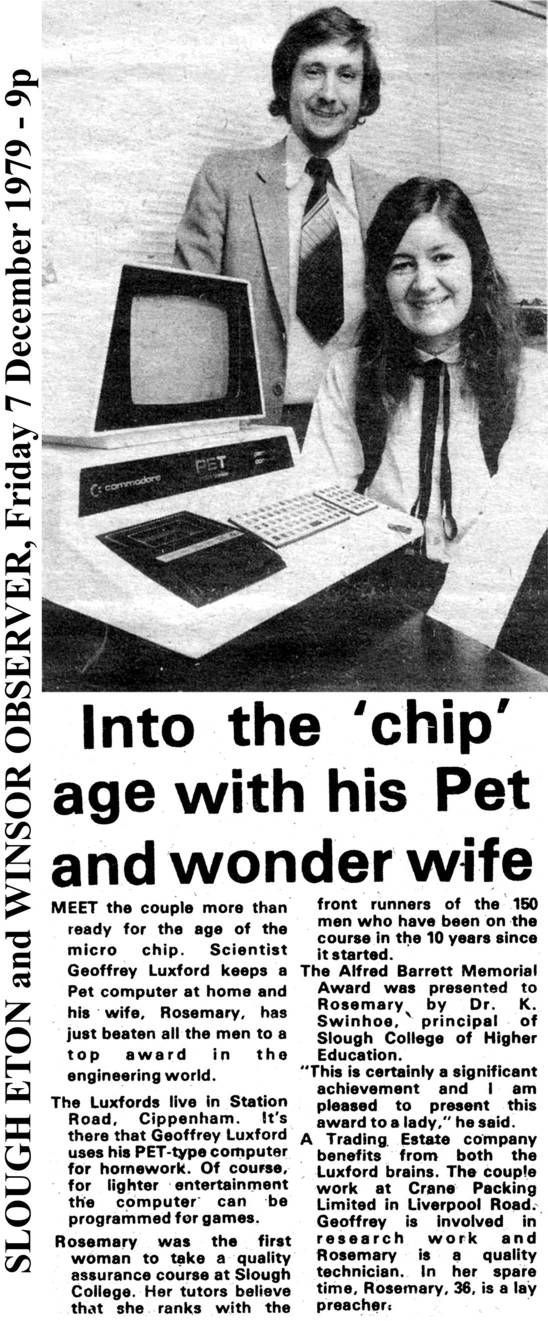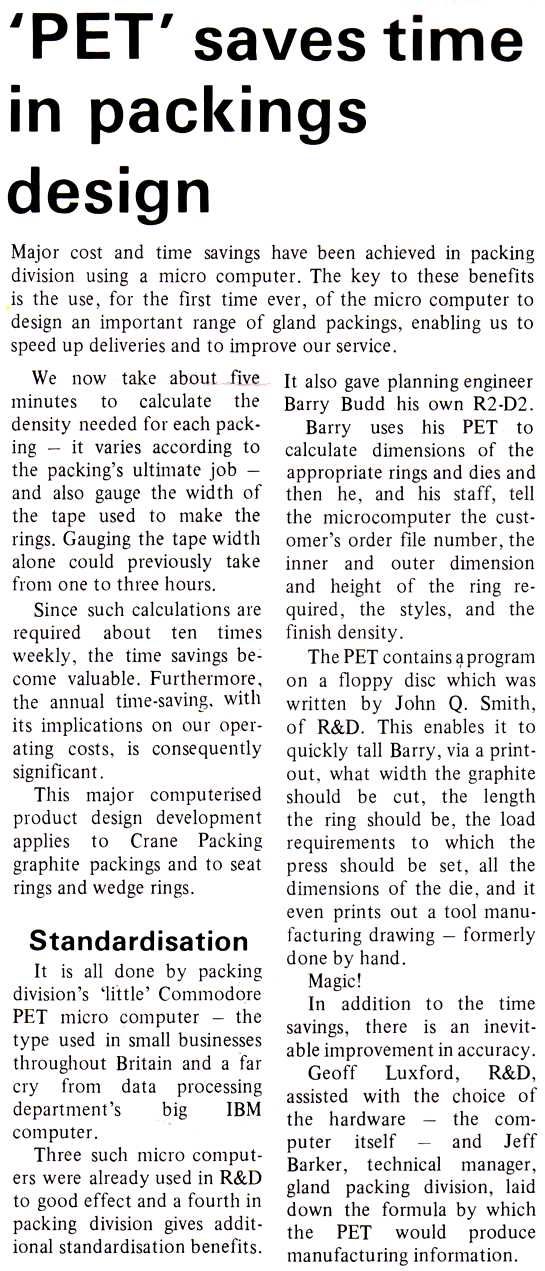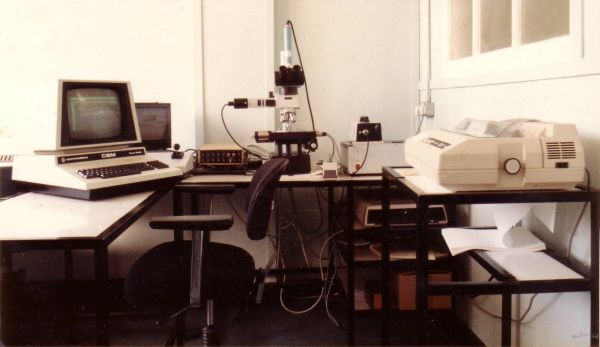|
This article was contributed by Dr Geoff Luxford in 2012. * You may be aware of previous correspondence I have had with your organisation concerning my experience with early personal computers, in particular the Commodore PET.
At the time I was working for Crane Packing at Slough as an R&D engineer for pump seals. One of the issues was how to carry out the necessary engineering calculations efficiently. By then scientific electronic calculators were available, and I had an early small cream CBM, with the red LED display, which I still have somewhere, but these were slow and tedious for all but basic calculations and using the company's main frame IBM 360 computer was a very cumbersome and restricted process with batch processing of punched cards. When there was an error in the program, the computer did a printed "core dump" on to reams of fanfold paper, and one of the engineers found all the company passwords among this, so we had to advise the computer department of this security issue.
An interesting point at the time was the UK centre for Commodore was then at 818 Leigh Road, Slough, just the other side of the railway bridge from Crane Packing, which was then in Crossbow house, where "The Office" UK TV series, with Ricky Gervais, was later set. However to purchase an official version of the PET, with the calculator keypad with built in tape recorder, was then, as I recall, about £800
I went to a computer exhibition in London and found I could purchase the 8kb version for £550, but this was a "grey" import from the USA, not by Commodore, with an auto transformer to adapt it to the UK mains voltage, and Commodore UK refused to provide any support for these machines.
The attached article, from the Slough Eton and Winsor Observer, of Friday 7 December 1979, occurred when a reporter came to our house about my wife being the first woman to pass the quality assurance course at Slough College and received the "Alfred Barrett Memorial Award". While there he saw the new Commodore PET micro-computer that I had recently purchased and took an interest in that. Hence the article. Later on, as the machines were being used within the company, officially purchased from Commodore UK, the second article was published in the company magazine, the Crossbowman, perhaps a year later, to illustrate how these computers were being used.
I spent about a year learning how to use the computer, in particular the Commodore BASIC and used to go to club meetings in London, the nearest then available, where we would exchange ideas and programs, using the cassette player, a slow and tedious process. From what I learned I then demonstrated this to the company, to show how it could help with our engineering work, after which the company purchased some of the machines, which had then developed into the CBM with disk drives. Initially these machines were just used for engineering calculations, but were then also applied to Word Processing, with Word Craft and daisy-wheel printers, to help with the preparation of technical reports, and then using Visi Calc for spreadsheet calculations, rather than writing programs in BASIC for simpler calculations. For a while I was teaching the secretaries how to use Word Craft, but have to say initially few of them were interested and found it difficult to cope with all the various formatting codes which then had to be learned. Some of them preferred to continue with there typewriters and ignored the computer with its word processor.
The personnel department later tried to use a CBM PET with Silicon Office data base, but it was really too much for the computers and software at that stage of development, until the IBM PC and more capable data base software became available.
One of the applications for the Commodore PET was to use it to control the movement of a microscope stage with a joystick control. As the photo shows, the microscope was also fitted with a video camera for ease of viewing. At the time this was a substantial investment. This system was used to measure and digitize the profile of small engineering components, in particular metal bellows. In this we also used one of the early monochrome graphics cards to plot the digitized profile on the screen and printer, as the basic PET only had character graphics. These measurements were then fed into a FORTRAN computer program, on the IBM 360 mainframe computer, to analyse the resulting stresses, to help optimise the design. Compared to an equivalent modern digitizing system the PET based system was quite slow and jerky, but a great advance of what was previously available. The program used for the stress analysis was purchased from Imperial College, where it had been developed for designing the concrete domed shell buildings for enclosing nuclear reactors. Unfortunately the FORTRAN compiler kept crashing the mainframe at busy times, which upset the processing of the accounts and sales, so it was then restricted to use in the evenings and weekends.
I still have a Commodore CBM business computer system, complete with Commodore twin floppy disk drive, Commodore dot matrix printer and various software, including WordCraft, and manuals. This was subsequently bequeathed to me by my sister when her organisation disposed of it. When I moved from Northants to Norfolk I discussed bequeathing this to your organisation, but there did not seem to be much interest. At present it is still packed away until we get our house sorted out.
Later when the BBC Micro became available, much of the engineering applications were then moved onto that, as it was a much more capable machine, particularly with a 6502 second processor and much improved BBC BASIC. However the 32k memory limit was a great restriction, particularly when the high resolution graphics used up 20k of that. For my own BBC Micro, I also obtained a 6502 2nd processor, and Cumana twin floppy disk drives. As I recall, I also had an OKI dot matrix printer, with sprocket paper feed, for which I succeeded in writing a graphics screen dump using 6502 assembler code. I still have this system, although it has not been used for many years. From Dr Geoff Luxford submitted September 2012 Date : 1979 This exhibit has a reference ID of CH23076. Please quote this reference ID in any communication with the Centre for Computing History. |
|













